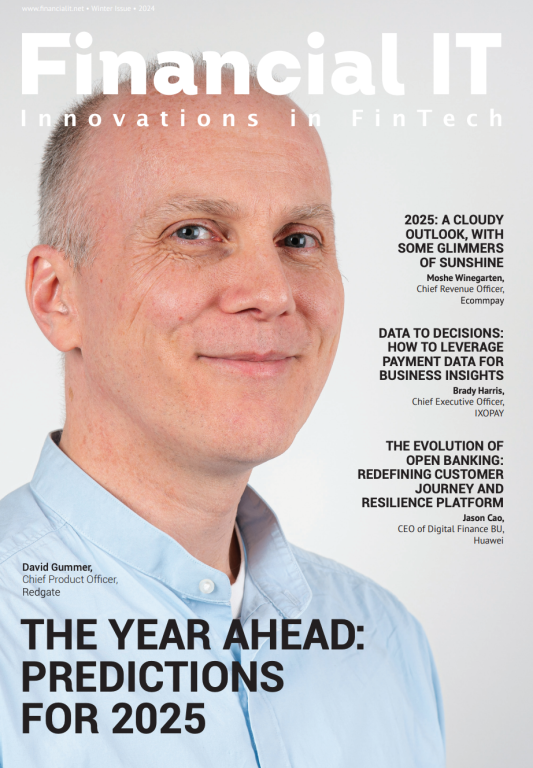Real-Time Connections Between Regulators and Banks is a Game-Changer

- Chris Skinner, Chairman at The Financial Services Club
- 10.10.2016 01:45 pm undisclosed
Had a really interesting chat about RegTech the other day. We were debating how regulators have changed in recent times, not just in encouraging start-ups and innovation, but it looking forward rather than backward.
For most of the time that I’ve dealt with financial services, regulators have always been in catch-up mode. They regulate what they see happening or that recently happened; they1 never regulated what’s coming and rarely regulated to determine changed behaviours with technology that they wanted to see happen in the future. You may say that things like RegNMS and MiFID created new behaviours like high frequency trading, but the motivation for MiFID was to create pan-European equities trading and eradicate the national concentration rules that allowed national stock exchanges to dominate the scene. Similarly, the big rulesets like Dodd-Frank and EMIR, PSD and others, were more to address known issues in the markets that had come to light, than create new markets.
Now, I’m seeing the regulators moving rapidly to open markets, encourage competition and not only change behaviours but to even create new markets and new products. By way of example, Open APIs in PSD2, the Regulatory Sandbox in the FCA and the ease of working with BaFIN to get licences for Solaris, N26 and Fidor (more on that over here http://11fs.co.uk/podcasts/ep112-secrets-of-berlin/ ). We have the competitive battles to be the centre of focus between centres like Hong Kong and Singapore, London and Berlin, New York and Silicon Valley; and hence, for the first time, the regulators are jumping on the innovation bubble emerging from FinTech.
One of the key things about these changes that we touched on in our debate is how times have moved rapidly in terms of the regulators themselves demanding access to financial market data. Back in 2009, shortly after the Global Financial Crisis (GFC) hit, the then UK regulator that was the Financial Services Authority (now the FCA and PRA) proposed that the banks provided real-time liquidity reporting to the regulator. It was a sound idea, but the resultant turmoil killed it, especially when the cost to adapt systems to provide real-time reporting came in with a bill of £2 billion.
Nevertheless, it is abundantly clear that we are moving towards real-time connectivity between the institutions that play in the markets and the regulators who manage those markets. In fact, it has already started in Austria:
Austria’s Alpine slopes tend to get most attention at the start of a year, but in central bank circles, all eyes in early 2015 are on the opposite end of the country. In Vienna ambitious changes to the collection and interrogation of bank data by Austria’s central bank, the Oesterreische Nationalbank (OeNB), are causing quite a stir.
The solution adopted by the country’s forward-thinking central bank and banking sector represents a new approach to regulatory reporting, leaving formatted templates to the annals of history.
The new methodology creates a software platform that bridges the gap between the IT systems of the OeNB and the banks. This allows critical information to be extracted from the sector at will by the central bank without increasing the administrative burden for the data providers.
It marks a significant shift in regulatory and statistical reporting, away from the archaic system of form-filling, to a future framework better able to cope with the growing demands of supervisors, including ad hoc requests that fall outside the regulatory reporting cycle.
So we have moved from the days of monthly, weekly, daily reporting to real-time reporting. But this is not even reporting; this is analysis by the regulator directly of the data of the banks. This is where the conversation got really interesting as we discussed the idea that, in the near future, banks won’t even have to think about what they have to tell the regulator; the regulator will just be taking it. At that point, regulatory reporting becomes just a hygiene factor underlying the markets. There is no conscious focus on reporting, as the regulator is keeping their hand on the pulse of the markets in real-time.
At this point, we then move beyond reporting to regulatory intelligence. The idea of having machine learning data analytics applied to market data by banks and the regulator should start to show systemic exposures and weaknesses pre-emptively. Before any market structural issues occur, the markets will know it.
That gets to be an interesting day. Meantime, it is quite clear the regulatory technologies are changing the game of market monitoring. Welcome and thanks to RegTech.
This article originally appeared on thefinanser.com





















